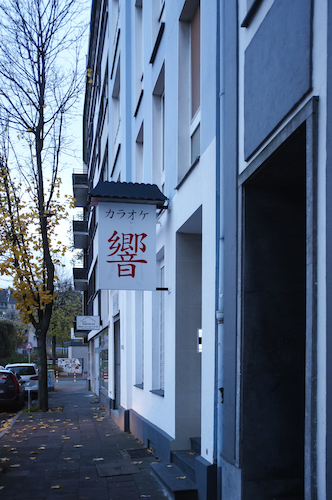180. The "Sound" Radical: 音
The 音 radical is on duty in just three Joyo kanji, including this one, of course:
音 (6: sound, noise)
Henshall calls the etymology of 音 disputed in his newer edition. He says some researchers interpret the bottom half as a "mouth" or "prayer receptacle." If the latter is true, the horizontal stroke bisecting the 日 might represent a "written prayer." Henshall says nothing about the significance of the 立 on top of 音. According to his book, one scholar believes that ancient people used 音 and 言 (word) interchangeably, though another expert perceives them as separate characters.
Photo Credit: Ulrike Narins
This sign at Ryogon-Ji Temple in Shunan City, which is in Yamaguchi Prefecture on Honshu, is on a kind of gateway to 観音岳 (かんのんだけ: Mount Kannon). Look what has happened to the 立 in the 音. Note, too, that the carved characters appear to protrude. For each stroke, there are two grooves on either side of a prominent ridge.
The Names of the 音 Radical
The autonomous 音 kanji carries the Joyo kun-yomi おと. Thus, the radical goes by the name おと when it comes to the 音 character itself, as well as this kanji:
響 (1171: echo; sound; influence; commotion)
If the radical instead occupies the left side of a kanji, the radical name おとへん works. That's true in this case:
韻 (1015: rhyme)
Now you've seen all three Joyo kanji with an on-duty 音 radical!
Not all sources agree that this nine-stroke radical has a variant form, but Nelson refers to the skinnier おとへん version as such.
In English, 音 is the "sound" radical. Nelson mentions "noisy" as an alternative name. That strikes me as pejorative!

Photo Credit: Samuel
In Duesseldorf, Germany, the proprietors of this karaoke place clearly cater to those in the know. The sign says only カラオケ and 響 (echo; sound; influence; commotion)! I wonder if they were thinking of "sound" or "commotion" when they chose the name!
The 音 in Two Kanji
Here's what Henshall says about the 音 in the more complex kanji I've introduced:
韻 (1015: rhyme)
The left side means "sound," and although 員 now means "member, official," the right side of 韻 originally represented "round-necked vessel." That 員 phonetically conveys "harmonize, rounded, mild." Overall, then, 韻 means "harmonious/mild sound."
響 (1171: echo; sound; influence; commotion)
The 音 means "sound," and the 郷 (village, rural) phonetically contributes the associated sense "air moves" or "spread outwards." Thus, 響 as a whole means "sound which moves/spreads out." One researcher takes the 郷 alone as representing "spreading sound."
The Bigger Picture
It's ridiculously easy to forget that a radical such as 音 exists and to focus mistakenly on the 立 or 日 parts of characters such as 暗 (224: dark) and 章 (318: written passage). After all, those smaller bits are radicals in their own right:
日 (radical 72: "sun")
立 (radical 117: "standing")
As with so many things in life, it helps to look at the big picture and to take 音 as one entity. It is off duty in 暗 and 章.
